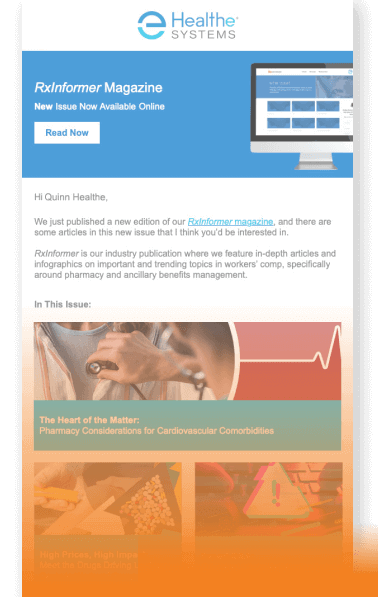As RxInformer celebrates 15 years of publication, the editorial staff looked back at past issues to review how the various insights and trends we’ve reported on in the workers’ comp industry have evolved. While many things have changed, some have stayed the same.
The focus of the workers’ comp industry remains the same – to improve patient care by optimizing claims management while controlling costs – but many of the trends that constitute obstacles, considerations, and pathways forward have changed.
Here are eight reflections on the workers’ comp industry across the last 15 years.
Workers’ comp was one of many forces that banded together to fight the opioid epidemic, and opioid management dominated our industry. Many lives were lost, families were forever affected, and significant financial resources were spent to help those struggling.
RxInformer began covering the opioid epidemic going back to its first issue in 2010, and as the epidemic progressed, the Fall 2013 edition of RxInformer featured six different articles based around opioids. RxInformer was just one voice among many in the industry, but it covered many opioid-related topics in a few short years, including:


As the years went on, the tide began to turn. By the Summer 2018 edition of RxInformer, for the first time there was not a single article dedicated primarily to opioids. The battle still raged, and the scars of the epidemic had educated many as to the concerns with these drugs, but enough frameworks and strategies had been built to begin gaining significant ground.
Opioid utilization began to trend down thanks to the hard work of so many different united stakeholders, and as prescribers shifted away from opioids, there’s been a greater diversity in drug therapy for pain management. This has contributed to multiple other, diffuse drug therapy trends, each with unique considerations.
But due to the nature of injury, there will always be a need to keep an eye on opioid utilization, and it remains a focus for many payers for their pharmacy management programs as evidenced by the fact that opioid/substance abuse control and prevention ranked as the #1 pharmacy management priority in our 2025 Industry Insights Survey Report.1
The concept of complex claims, or 10-15% of claims driving 80% of medical spend, is not a new one. However, factors that are considered complexities or risks within claims have grown significantly more nuanced in terms of how claims organizations are identifying and addressing them.
Historically, medical management has primarily focused on the injury that ushered patients into the workers’ comp system and the medical treatment of that injury.

Using pharmacy management as an example, this includes managing therapeutic concerns such as inappropriate opioid utilization, excessive polypharmacy, dangerous drug combinations, and other risks that present harm to the injured worker and a potential detriment to claim outcomes.
Today, claims organizations and their partners have identified more opportunities where they are positioned to drive optimal claim outcomes by expanding their visibility and strategies to help address complexities outside of the work-related illness or injury. This includes factors such as comorbidities, mental health concerns, and behavioral and social determinants of health (SDOH).
In our Social Determinants of Health Series, RxInformer has provided information related to tobacco and alcohol use, to socioeconomic factors, exposure to violence, and more. More recently, our Comorbidities Series has highlighted how conditions such as cardiovascular disease and obesity can impact medical management of the injured worker. And from a more proactive lens, we’ve also taken a look at employee wellness, with information related to keeping workers healthy to prevent injury or to better manage injuries – from fatigue in the workplace, to the impacts of a changing climate, and much more.
“Big Data” was an often-used term in and around 2010. And in the years that followed, workers’ comp medical management programs became increasingly focused on solutions to harness and make use of this data, with predictive analytics beginning to play an increasingly significant role as payers and their partners continued to refine their ability to forecast claims-related risk and intervene earlier.
The biggest leap forward in these efforts, of course, came with the introduction and adoption of AI and machine learning capabilities, technologies that were powerful enough to finally enable the industry to effectively get its arms around all our data. This has allowed the workers’ comp industry to drive workflow automation, the detection of fraud, waste and abuse, risk mitigation, and other uses. The last few years have seen even greater acceleration as generative AI has rapidly taken center stage.
With the advantages of AI also come questions of transparency, accountability, bias, and privacy. Furthermore, regulation adds another layer, as different states are adopting different requirements, meaning AI systems must abide by different rulesets.
While the potential to leverage AI is here, the conversation now centers around the most meaningful way to do so. Adopting these technologies requires effective blueprints and process design which proactively consider measurable benefits as well as potential risks.
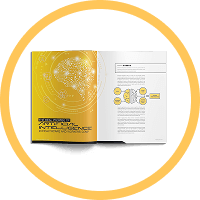
The conversation has shifted from anticipation to more powerful tools to thoughtful adoption.
The workforce of 2010 looks incredibly different from today’s workforce in many different capacities. These differences contribute to changes in the management of medical care, how the workers’ comp system functions, and more.
Generational diversity has grown significantly in the workforce, providing considerations for how care is managed across different populations. With retirements delayed, the average age of workers is increasing, even as Millennials and now Gen Z gain share in the workforce.
Not only are there several different generations to consider, but each new generation comes with greater minority representation as well, which adds more unique health considerations.
Lifestyle choices, healthcare preferences, expectations for the role of technology in their experience, receptiveness to different types of therapies – all these aspects which impact injured worker recovery vary greatly across these diverse populations.
RxInformer has covered many of these topics with content related to the Millennial generation and Gen Z, health and medication-related risks for older workers, and disparities in opioid risk among different groups based on race, gender, socioeconomic status and more.

Approximately 25% of the insurance labor force is 55 years or older,2 and replacing these individuals as they retire has been difficult, especially as fewer younger individuals enter the insurance industry.
While automation and technology are doing much to reduce workloads and provide clinical guidance for claims professionals, the insurance industry has long noted the need to attract, train, and retain new talent, and this challenge remains present.
But as technology continues to evolve, some are optimistic that claims staff will eventually be able to unburden themselves from repetitive, manual tasks to enable focus on soft skills like empathy and communication, helping to better engage injured workers and other stakeholders.
In addition to the workers themselves, the workplace itself has changed as well. The COVID-19 pandemic was a time of significant change, affecting the workforce and how care is managed. First and foremost were increased concerns around worker safety, stemming from fear of viral infection. Some industries – and their workforces – were decimated in the face of pandemic shutdowns. More fortunate industries turned to remote work; however, for some workers, this contributed to greater isolation and a need to focus on mental health.
The upheaval of the workplace dynamic spurred the Great Resignation, shifting the makeup of different occupational industries, with the healthcare, hospitality, retail, and warehouse sectors being greatly affected.
RxInformer also reported on downstream changes in workers’ comp healthcare. For example, telehealth rules were relaxed to enable this channel of care to become utilized, in efforts to ensure access to care while mitigating the infection risk posed by in-person care. Conversely, provider shortages became accelerated, with healthcare professional burnout occurring in record rates even as more professionals continued to retire from the field.
While the pandemic may be over, some of these ripple effects are still being felt to this day.
Laws reducing the burden of proof for the injured worker for specific occupational illnesses and injuries look vastly different from 2010, requiring more nuanced medical management strategies, including drug formulary management, for these employee populations.
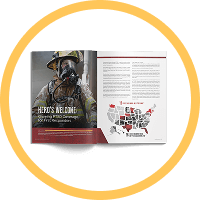
The shift began with first responders, particularly with firefighters due to the years following the 9/11 terrorist attacks – the long-term hazards of the job became more apparent, contributing to presumptions for conditions such as cancers and cardiovascular disease.
But in addition to physical hazards, the psychological impact of witnessing traumatic events has gained more attention for firefighters, police officers, emergency medical personnel, and others. This led to laws sweeping across states for mental-only injury (such as PTSD) for first responders. And as more and more states passed such presumptions, there have been attempts to pass similar presumptions for workers outside of first responder occupations.
For instance, in 2023, Connecticut enacted a mental health presumption for all employees without the need for physical injury, with New York doing the same thing at the end of 2024, though this New York presumption was quickly rolled back to just first responders in early 2025
For further information on the evolution of presumptions in workers’ comp, see Burden of Proof: Unpacking Presumptions in Workers’ Comp in this issue of RxInformer.
Many drug trends have come and gone over the last 15 years, but two trends that have persisted are physician dispensing and topical analgesics/dermatological agents.
While the two topics are not necessarily joined at the hip, it is difficult to discuss one without the other. Though physician dispensing has involved trends outside of topicals – such as repackaged drugs, (non-topical) compounds, packs and kits, and more – physician dispensers have regularly returned to topicals over the last 15 years.

Regulation and strategies implemented by workers’ comp stakeholders have caused physician dispensers to shift their topical prescriptions over the last decade and a half, from topical compounds to homeopathic topicals, topical packs and kits, topical medications at unique or uncommon drug strengths, and private-label topicals (PLTs).
And as workers’ comp shifts away from opioids and towards other pain medications, topicals/dermatologicals now make up the biggest share of drug spend.3 Physician dispensers have had a significant hand in driving the prevalence of PLTs in particular, which represent a significant share of dermatological costs, as PLTs are almost exclusively physician dispensed.
While prescription drug activity within workers’ comp has very standardized and accessible trends data, consolidated insights into cost and utilization trends in ancillary services – comprising durable medical equipment (DME), home health, physical medicine, diagnostics, and transportation and translation – can be less accessible.
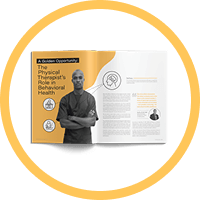
This is in part due to the fragmentation in how these various services are traditionally structured, reported on, and managed.
Healthesystems is uniquely positioned through the data captured from our Ancillary Benefits Management program to provide insight across the various ancillary services involved in an injured workers’ care. RxInformer has regularly reported on the following topics, which are just as relevant today as they were over a decade ago:
In 2010, only 10 states had medical marijuana programs, while none had recreational laws. As of the start of 2025, 39 states have medical programs, while 24 have recreational laws.
It’s clear that as a country, public acceptance of marijuana has grown tremendously, but the question of clinical efficacy for medical use is still undecided.
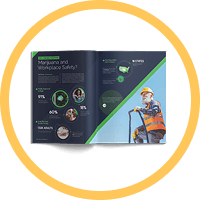
While workers’ comp saw no acceptable medical use for marijuana in 2010, there is some level of clinical agreement that marijuana has some limited potential to treat chronic pain, migraines, seizure disorders, and other conditions, but only as an option of last resort when other therapies fail to assist patients.
However, there is still no accepted clinical guideline for marijuana in the U.S., particularly due to federal research restrictions. This lack of research creates questions of clinical appropriateness, which has slowed acceptance. Lukewarm acceptance has slowed utilization and the production of data, leading to a cycle that has persisted for over a decade.
This holding pattern has limited marijuana acceptance in workers’ comp and likely will continue to be the case while marijuana remains a federal Schedule I substance. While the use and reimbursement of workers’ comp is occasionally required in certain states under particular circumstances, these circumstances are rare. In fact, the unique circumstances that require the use of marijuana as a last resort often keep marijuana from being seen independently as a potential treatment option in and of itself.
However, with the rise in recreational use, it must be acknowledged that marijuana has the potential to impact claims management, ranging from workplace safety considerations to impacts on drug therapy.
